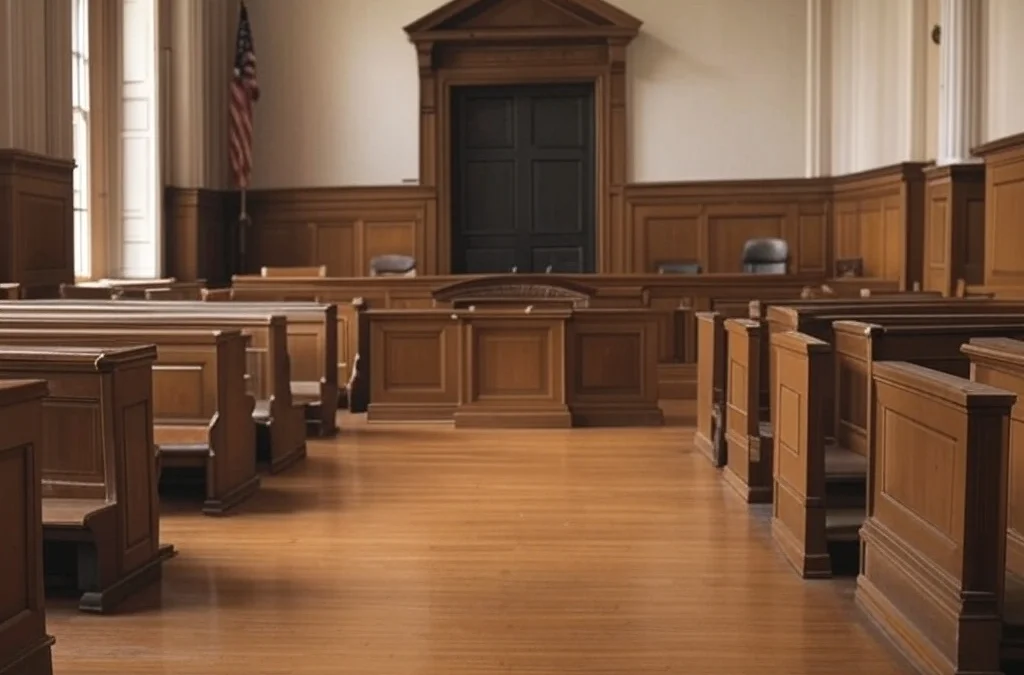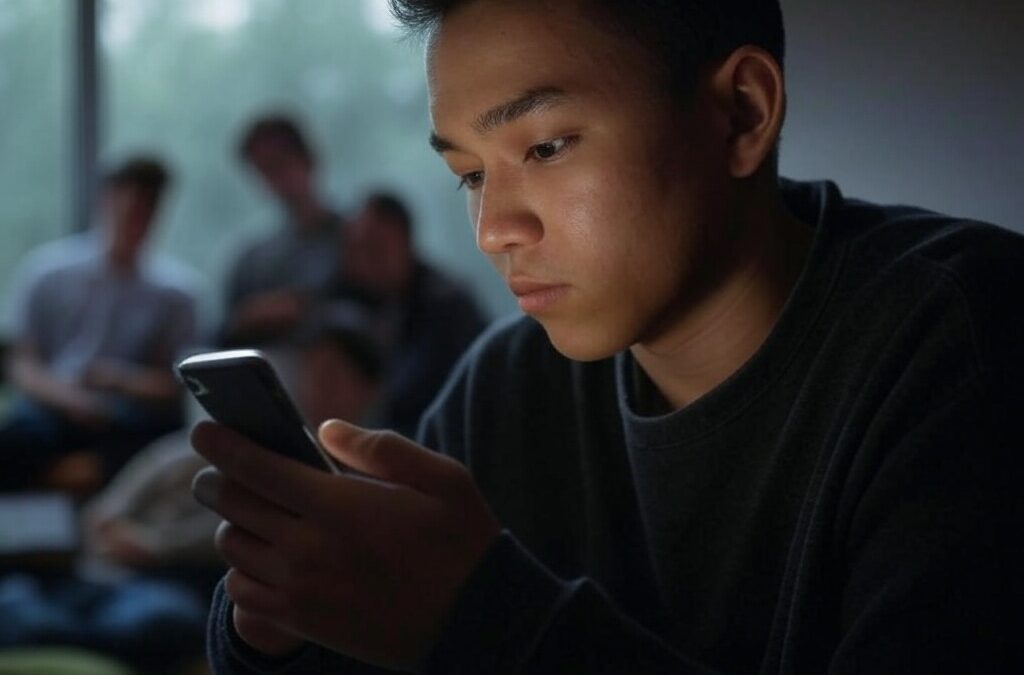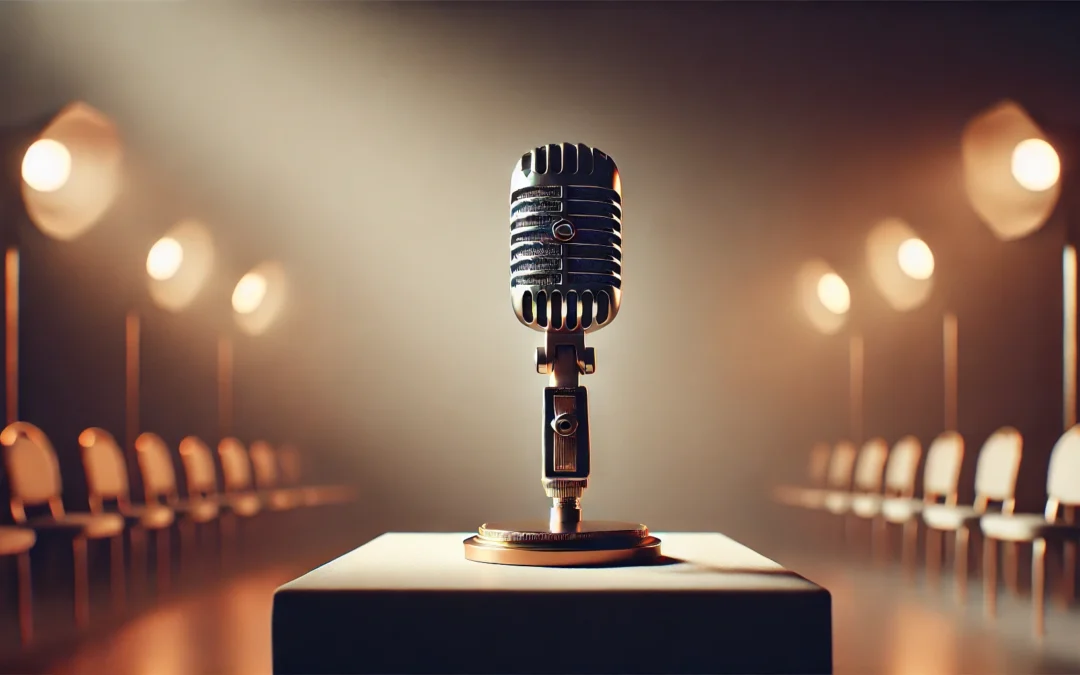Imagine you’re at a family dinner, and the conversation shifts from the weather to your cousin’s new job. As everyone shares their thoughts and experiences, you’re witnessing discourse in action. Discourse is all around us—it’s the way we communicate and share ideas, whether through spoken words, written text, or even visual media. It shapes our understanding of the world and helps us connect with one another. Understanding the different types of discourse can enhance our ability to communicate effectively and appreciate the diverse ways people express themselves.
In this article, we’ll explore 20 examples of discourse to give you a clearer picture of how it works in various contexts. From casual chats with friends to formal presentations at work, each type of discourse has its own unique features and purposes. By recognizing these examples, you can become more aware of the ways you interact with others and improve your communication skills. So, let’s take a closer look at these examples and see how they play out in everyday life.
What is Discourse?
Discourse is the way we use language to communicate ideas, express opinions, and share information in different contexts. It refers to both spoken and written communication and can take many forms, such as conversations, debates, speeches, essays, and even social media discussions.
More than just words and sentences, discourse shapes how we think, interact, and influence others. It is guided by social, cultural, and historical factors, meaning that the way we communicate is influenced by our background, beliefs, and the situation we are in.
In everyday life, discourse can be as simple as chatting with a friend or as formal as a presidential speech. It is how people tell stories (narrative discourse), persuade others (argumentative discourse), explain ideas (expository discourse), or describe things in detail (descriptive discourse).
Understanding discourse is key to effective communication, critical thinking, and media literacy. It helps us recognize hidden meanings, biases, and social influences in everything from news articles to political speeches. By learning how discourse works, we can better engage in discussions, form stronger arguments, and navigate the world of language with confidence.
The Best Examples of Discourse
By exploring 20 discourse examples, this article will give you a deeper understanding of how language shapes communication in different contexts. Keep reading to discover real-world discourse examples and their significance!
1. Political Debates
In political debates, discourse is evident as candidates discuss their policies and viewpoints. These debates allow candidates to articulate their positions while engaging with opposing ideas. The structured nature of political discourse helps voters understand where each candidate stands on critical issues.
2. Academic Journals
Academic journals are a prime example of discourse in scholarly communication. Researchers publish their findings, contributing to ongoing discussions in their fields. This type of discourse is formal and relies heavily on evidence and citations to support arguments.
3. Classroom Discussions
In a classroom setting, discourse occurs when students and teachers exchange ideas about a subject. This interactive form of communication helps students develop critical thinking skills. Teachers guide discussions to ensure that everyone’s voice is heard and that varied perspectives are considered.
4. Online Forums
Online forums are digital spaces where individuals engage in discourse about shared interests or questions. Participants post messages, respond to others, and build conversations over time. This type of discourse can vary from informal to formal, depending on the forum’s purpose.
5. News Articles
News articles provide a form of discourse that informs the public about current events. Journalists use language to report facts and sometimes include analysis or commentary. The style and tone of discourse in news articles can influence how readers perceive the information.
6. Legal Proceedings
In legal proceedings, discourse takes the form of arguments presented by lawyers. They use precise language to advocate for their clients and persuade judges or juries. The structured nature of legal discourse ensures clarity and adherence to procedural rules.
7. Social Media Conversations
Social media platforms facilitate a unique form of discourse where users express opinions and share content. This type of discourse is often informal and can spread rapidly. Social media discourse can shape public opinion and influence societal trends.
8. Business Meetings
In business meetings, discourse involves discussions about goals, strategies, and decisions. Participants use language to negotiate, persuade, and collaborate. Effective business discourse is crucial for achieving consensus and driving organizational success.
9. Literary Criticism
Literary criticism involves discourse about literature, where critics analyze and interpret texts. This discourse helps readers understand deeper meanings and contexts. Critics use varied approaches, such as historical or feminist critiques, to explore different facets of literature.
10. Religious Sermons
Religious sermons are a form of discourse where religious leaders convey moral and spiritual teachings. Through sermons, leaders interpret sacred texts and relate them to everyday life. This discourse aims to inspire, educate, and guide followers in their faith.
11. Medical Consultations
In medical consultations, discourse shapes the interaction between healthcare providers and patients. Physicians use language to explain diagnoses and treatment options, while patients express symptoms and concerns. This type of discourse is crucial for ensuring accurate understanding and effective care.
12. Advertising Campaigns
Advertising campaigns employ discourse to persuade and inform consumers. Through strategic language and imagery, advertisements convey messages about products or services. The discourse in advertising aims to influence consumer behavior and shape brand perception.
13. Scientific Conferences
At scientific conferences, discourse occurs as experts present research findings and discuss innovations. These gatherings facilitate the exchange of knowledge and foster collaboration. The formal and technical nature of this discourse reflects the precision required in scientific communication.
14. Family Conversations
Family conversations are a form of informal discourse that occurs in everyday life. These interactions allow family members to share experiences, resolve conflicts, and build relationships. The casual nature of this discourse fosters a sense of connection and understanding.
15. Film Critiques
Film critiques involve discourse where reviewers analyze and evaluate movies. Critics discuss elements like plot, character development, and cinematography. This discourse helps audiences appreciate film as an art form and influences their viewing choices.
16. Customer Service Interactions
In customer service interactions, discourse is used to address inquiries and resolve issues. Representatives use clear and courteous language to assist customers effectively. This type of discourse is essential for maintaining customer satisfaction and loyalty.
17. Technical Manuals
Technical manuals provide a structured form of discourse that instructs users on operating complex devices or systems. The precise language and detailed explanations ensure users can follow procedures correctly. This discourse is vital for safety and functionality.
18. Support Groups
Support groups facilitate discourse among individuals facing similar challenges or experiences. Participants share personal stories, offer advice, and provide emotional support. The empathetic nature of this discourse creates a sense of community and healing.
19. Art Exhibitions
Art exhibitions involve discourse through the interpretation and appreciation of visual art. Curators and artists use language to convey themes and concepts behind the artworks. This discourse enhances the viewer’s understanding and engagement with art.
20. Environmental Campaigns
Environmental campaigns use discourse to raise awareness and promote sustainable practices. Activists and organizations communicate the urgency of environmental issues through speeches, publications, and social media. This discourse aims to inspire action and drive change.
What Michel Foucault Taught Us About Discourse
One of the most influential thinkers on discourse is Michel Foucault, a French philosopher and historian whose work fundamentally changed how we understand language, power, and knowledge. Foucault argued that discourse is much more than just communication—it is a powerful force that shapes how we think, what we believe, and how society is structured.
Discourse as a System of Power and Knowledge
Foucault believed that discourse is not neutral; instead, it creates and reinforces power structures in society. He introduced the idea that discourse is linked to knowledge production, meaning that the way we talk about something determines what is considered true or valid. According to Foucault, institutions like governments, schools, and the media use discourse to establish authority and control over people’s understanding of reality.
For example, in the medical field, the way doctors talk about mental health defines what is considered “normal” or “abnormal” behavior. Similarly, in politics, the language used by leaders and media influences public opinion and policies. This shows how discourse shapes what we see as facts and truth, even though these “truths” may change over time as dominant discourses shift.
The Concept of Discursive Formation
Foucault introduced the term “discursive formation”, which refers to the structured way certain topics are discussed within a particular era. Different historical periods have different discourses that define what people can say, think, and do. For example:
- In the Middle Ages, discourse about illness was centered around religious explanations, often attributing diseases to divine punishment.
- In the 19th and 20th centuries, the discourse shifted toward scientific and medical explanations, defining diseases through biology and psychology.
This shift shows how discourse changes over time, influencing how people understand the world and their place in it.
Discourse and Social Control
One of Foucault’s most critical contributions was his idea that discourse is a tool of social control. He argued that those in power control discourse to shape societal norms and limit what is acceptable to say or think. This is evident in areas like:
- Education – Schools teach specific narratives about history and culture, reinforcing particular ideologies while excluding alternative perspectives.
- Law and Order – Legal discourse determines what is considered a crime and how justice is served, influencing societal behavior.
- Media and Politics – Politicians and media outlets use discourse to control public perception, sometimes shaping narratives to maintain power.
Foucault’s work helps us understand that discourse is not just about words—it is about who gets to speak, whose voices are heard, and what knowledge is accepted as truth.
Why Foucault’s Ideas on Discourse Matter Today
In today’s world, Foucault’s ideas are more relevant than ever. The way issues like climate change, social justice, gender identity, and artificial intelligence are discussed shapes public perception and policy decisions. Those who control the dominant discourse influence how society understands and responds to major challenges.
If we aware of how discourse operates, we can become critical thinkers who question dominant narratives, recognize hidden power dynamics, and engage more thoughtfully in conversations—whether in politics, the media, or everyday life.
The Role of Discourse in Shaping Public Opinion
Discourse is a powerful force in shaping how we think and feel about the world. From news articles to social media posts, the way ideas are communicated can influence public opinion in significant ways. Understanding this role is key to engaging with the world around us.
Public discourse refers to the exchange of ideas and information in public spaces. This includes everything from conversations at the dinner table to debates on television. The words we use and the way we frame issues can sway people’s opinions. For instance, the language used in political speeches often aims to unite or divide audiences. This is why politicians carefully choose their words, knowing they can shape public perception and policy.
In the age of the internet, the speed and reach of discourse have increased dramatically. Social media platforms, like Twitter and Facebook, allow ideas to spread quickly across the globe. Hashtags can turn local issues into international discussions. This connectivity means that voices from different backgrounds can contribute to shaping opinions. However, it also means misinformation can spread just as fast, highlighting the importance of critical thinking.
The role of discourse is not just about spreading information. It’s also about creating meaning. The narratives we share can affirm our beliefs or challenge them. For example, when communities share stories of their experiences, they can foster empathy and understanding. This human connection is crucial in bridging divides and finding common ground.
Everyone plays a part in this process. When you share a story or comment on a post, you contribute to the larger conversation. This is why it’s important to be mindful of the impact your words can have. Encouraging respectful dialogue and considering multiple perspectives can enrich public discourse and lead to more informed opinions.
In conclusion, discourse is a vital tool in shaping public opinion. By being aware of how it works, we can better understand the world and our place in it. Engaging thoughtfully in conversations, both online and offline, can help build a more informed and connected society.
Understanding Discourse in Communication Studies
Discourse in communication studies is a fundamental concept that refers to the use of language in speech and writing to communicate ideas, beliefs, and emotions. It examines how language is used in various contexts to construct social realities, influence perceptions, and establish relationships between individuals and groups. Communication scholars analyze discourse to understand how language shapes our understanding of the world and our interactions within it. This involves looking at the structures of language, such as grammar and syntax, as well as the social norms and conventions that govern communication.
In communication studies, discourse is not just about language itself but also about the power dynamics and social structures that language reflects and reinforces. For instance, political discourse can reveal how politicians use language to persuade, manipulate, or control public opinion. Similarly, media discourse can show how news outlets shape narratives and influence public perception through their choice of language. By studying discourse, researchers gain insights into how language functions as a tool for social action and change.
The Role of Discourse in Online Communities
In the digital age, discourse has taken on a new dimension with the rise of online communities. These platforms, such as forums, social media, and discussion boards, have become spaces where discourse flourishes in diverse and dynamic ways. Online discourse differs from traditional face-to-face communication because it often happens asynchronously and can involve participants from around the globe. This global reach allows for a rich exchange of ideas but also presents challenges, such as managing misunderstandings and ensuring respectful interactions.
Online discourse is characterized by its rapid spread and the ability for anyone to contribute, which can lead to both positive and negative outcomes. On one hand, it democratizes communication, giving a voice to individuals who might otherwise be marginalized. On the other hand, it can also lead to the spread of misinformation and the amplification of toxic behaviors. Platforms like Reddit and Twitter have developed community guidelines and moderation systems to foster healthy discourse and mitigate these issues. Understanding the role of discourse in online communities is essential for navigating these digital spaces effectively and responsibly.
The Evolution of Discourse Across Cultures
Discourse is the way we communicate ideas, beliefs, and values. It’s a fundamental part of human interaction. Over time, discourse has evolved dramatically across different cultures. This evolution reflects changes in society, technology, and human thought.
In ancient times, discourse was often oral. Storytelling around a fire, speeches in public squares, and debates in forums were common. These methods allowed people to share knowledge and culture. Oral traditions were vital for passing down history and values. They helped shape communities and societal norms.
With the invention of writing, discourse took on a new form. Written records allowed for more complex ideas to be shared. People could now read and interpret texts at their own pace. This led to the spread of religious texts, scientific ideas, and philosophical thoughts. Writing enabled cultures to preserve their histories more accurately.
The printing press revolutionized discourse once again. Books and pamphlets became widely available. Literacy rates increased as more people gained access to written material. This era saw a surge in the exchange of ideas. The Renaissance and Enlightenment periods were marked by vibrant discourse that challenged old ways of thinking.
In modern times, technology has transformed discourse further. The internet connects people across the globe instantly. Social media platforms give everyone a voice. This has created a diverse and dynamic global conversation. People can share their experiences, opinions, and cultures with ease.
However, this digital era also presents challenges. Misinformation spreads quickly. The sheer volume of content can be overwhelming. It’s crucial to develop critical thinking skills to navigate this landscape. Understanding different cultural perspectives enriches our own worldview.
Discourse continues to evolve, shaped by the tools we use and the contexts we live in. It’s a reflection of human progress and adaptation. By studying how discourse has changed, we gain insights into our own cultures and those of others.
Exploring Cultural Variations in Discourse
Understanding discourse across different cultures and historical contexts is crucial for effective global communication. Each culture has unique norms and traditions that shape how people communicate. These cultural differences can significantly impact international interactions, making it essential to approach cross-cultural discourse with sensitivity and awareness.
Cultural Norms and Communication Styles
Every culture has its own set of norms that influence communication styles. In some cultures, directness is valued, while in others, indirect communication is the norm. For instance, in many Western cultures, people appreciate straightforwardness and clarity. In contrast, many Asian cultures might prioritize harmony and indirectness to avoid conflict. Recognizing these differences is key to understanding how messages are received and interpreted.
Historical Contexts and Their Influence
Historical contexts also play a significant role in shaping discourse. The way people communicated in the past influences current communication practices. For example, societies with a history of colonization might still exhibit communication patterns influenced by their colonizers. Understanding these historical influences helps us appreciate why certain communication styles persist.
Cross-Cultural Interactions
In a globalized world, cross-cultural interactions are inevitable. Misunderstandings can arise when cultural norms clash. For example, a gesture considered polite in one culture might be offensive in another. Being aware of these potential pitfalls is important for anyone engaging in international discourse. Successful communication requires not just language skills but also cultural sensitivity.
The Importance of Cultural Sensitivity
Cultural sensitivity is crucial in global communications. It involves being aware of and respecting cultural differences. This sensitivity can prevent misunderstandings and foster better relationships. Businesses, diplomats, and individuals alike benefit from understanding the cultural contexts of their counterparts. This understanding leads to more effective and respectful communication.
Examples of Cross-Cultural Discourse
Consider a business meeting between American and Japanese companies. In the U.S., meetings might be fast-paced and focused on quick decision-making. In Japan, however, meetings may involve more discussion and consensus-building. Recognizing these differences can lead to more productive interactions. Another example is the use of silence. In some cultures, silence is a natural part of conversation, while in others, it might be perceived as awkward or uncomfortable.
Conclusion
Discourse is a universal phenomenon, but it is deeply influenced by cultural diversity. By exploring how communication varies across cultures and historical contexts, we gain a richer understanding of the world. Embracing cultural sensitivity not only enhances international interactions but also enriches human connections. As we continue to engage with people from different backgrounds, let us remember the importance of respect and understanding in our global communications.
The Impact of Technology on Discourse
Technology has changed the way we communicate. In the past, conversations often took place face-to-face or over the phone. Today, we have many more options. Social media, messaging apps, and video calls have become part of our daily lives. This shift has both positive and negative effects on how we interact.
One major impact is the speed of communication. We can now send messages instantly across the globe. This has made it easier to stay in touch with friends and family. It also means that news spreads faster than ever. People can share their thoughts on current events in real-time. This immediacy can enhance public discourse by providing a platform for diverse voices.
However, the rapid spread of information also has downsides. Misinformation can easily go viral, leading to confusion and mistrust. The sheer volume of content can be overwhelming. It’s not always easy to determine what is true or important. This can lead to shallow understanding of complex issues.
Technology has also influenced the tone of our conversations. Online anonymity can encourage people to speak more freely. This can be good for honest discussions, but it can also lead to negative behavior. Cyberbullying and trolling are unfortunate byproducts of this freedom. It’s important to foster a culture of respect and empathy online.
The rise of technology has also made communication more visual. Emojis, GIFs, and memes are now common ways to express ideas. These tools can add humor and emotion to conversations. But they can also oversimplify complex thoughts. It’s crucial to balance visual and textual communication.
In professional settings, technology has transformed discourse as well. Remote work tools allow teams to collaborate from anywhere. This increases flexibility and productivity. Yet, it can also make it harder to build genuine connections with colleagues. Video calls are not a perfect substitute for face-to-face meetings.
As technology continues to evolve, so will our ways of communicating. It’s vital to remain aware of these changes and their implications. We should strive to use technology to enhance, rather than hinder, meaningful discourse. By doing so, we can ensure that our conversations remain rich and impactful.
Practical Tips for Engaging in Effective Discourse
Effective communication is crucial in both personal and professional settings. To engage in meaningful discourse, consider the following practical tips and strategies that can enhance your communication skills.
Active Listening
Active listening is the foundation of effective communication. It involves fully concentrating, understanding, and responding to what is being said. Here are some tips:
– Focus on the Speaker: Give the person your full attention. Avoid distractions and make eye contact.
– Show That You’re Listening: Use nods, smiles, or small verbal comments like “I see” to show engagement.
– Reflect and Clarify: Repeat back what you’ve heard in your own words to confirm understanding. Ask questions if something is unclear.
Active listening not only helps you understand the other person’s perspective but also makes them feel valued.
Empathy in Communication
Empathy involves understanding and sharing the feelings of others. It is a key component in building strong relationships.
– Put Yourself in Their Shoes: Try to see things from the other person’s perspective.
– Respond with Empathy: Acknowledge their feelings with responses like, “That sounds challenging” or “I understand how you feel.”
Empathy can transform a conversation, making it more genuine and productive.
Clarity and Conciseness
Clear communication is essential for avoiding misunderstandings.
– Be Direct: Get to the point without unnecessary details.
– Use Simple Language: Avoid jargon or complex words that might confuse the listener.
– Organize Your Thoughts: Present information in a logical sequence.
Clarity ensures your message is understood and retained.
The Power of Persuasive Language
Persuasive language can influence others and strengthen your arguments.
– Use Facts and Data: Support your points with evidence.
– Appeal to Emotions: Connect with the listener emotionally to make your message more compelling.
– Be Confident: Speak with conviction to convey authority and trustworthiness.
Persuasive language is a powerful tool in both negotiations and everyday conversations.
Examples of Successful Discourse Practices
Personal Setting
Imagine a family discussion about planning a vacation. By actively listening to each family member’s preferences and empathizing with their excitement or concerns, you can collaboratively decide on a destination that satisfies everyone.
Professional Setting
In a team meeting, clear and concise communication can lead to productive brainstorming sessions. When presenting a new project idea, using persuasive language backed by data can help gain the support of colleagues and stakeholders.
Improving communication skills takes practice. By focusing on active listening, empathy, clarity, and persuasive language, you can engage in more effective discourse. These strategies will not only enhance your personal relationships but also boost your professional success. Start applying these tips today and notice the positive impact on your interactions.
How Discourse Shapes Society and Decision-Making
Discourse plays a crucial role in shaping public opinion and guiding decision-making processes. The way ideas are communicated can significantly affect societal beliefs and attitudes.
The Power of Media
Media is a powerful tool in shaping public opinion. News outlets, television, and online platforms distribute information widely. They have the ability to highlight certain issues while ignoring others, thus influencing what the public perceives as important. For example, the media coverage of the civil rights movement in the 1960s played a pivotal role in raising awareness and garnering support for social change. Images and stories of peaceful protests and violent responses were broadcast to millions, shifting public opinion in favor of the movement.
Political Rhetoric
Political rhetoric is another significant form of discourse. Politicians use language strategically to persuade and mobilize. They craft messages that resonate with their audience’s values and beliefs. For instance, Franklin D. Roosevelt’s fireside chats during the Great Depression helped reassure and unify the American public. His straightforward and empathetic communication style fostered trust and support for his policies.
Social Movements
Social movements also utilize discourse to challenge existing power structures and advocate for change. Movements like the labor rights movement have used speeches, pamphlets, and demonstrations to communicate their demands and gain public support. The rhetoric employed by these movements often appeals to shared values and collective identity, inspiring people to take action.
Discourse as a Catalyst for Social Change
One notable example is the anti-apartheid movement in South Africa. Activists used speeches, music, and international campaigns to draw attention to the injustices of apartheid. This discourse not only raised global awareness but also pressured governments to impose sanctions on the South African regime. Ultimately, this contributed to the dismantling of apartheid and the establishment of a democratic society.
Conversely, discourse can also reinforce existing power structures. During the Cold War, propaganda was used extensively by both the United States and the Soviet Union to bolster nationalistic sentiments and justify political actions. This form of discourse maintained public support for ongoing tensions and military expenditures, illustrating how language can uphold the status quo.
Read also: 20 Examples of Inaccessibility & Definition
The Most Popular on BitGlint

30 Naivety Examples & Definition
Naivety is something most people experience at some point in their lives. It often starts in childhood, but for some,...

Top 100 Things That Are Hot
Have you ever wondered about the hottest things around us or far beyond our everyday lives? Hot temperature isn't just...

Top 100 Optimism Examples & Definition
Optimism is more than just looking on the bright side. It’s a mindset that shapes how people face challenges, make...

50 Great Wisdom Examples & Helpful Advice
Wisdom is one of the most important qualities a person can have—but also one of the most misunderstood. It’s not just...

30 Patterns in Nature: Examples & Explanation
Patterns in nature surround us every day. From the delicate veins on a leaf to the mesmerizing spirals of a galaxy,...

30 Honesty Examples & Definition
Honesty is one of the most important values a person can have. It affects how we act, how we speak, and how others see...

30 Moral Reasoning Examples & Definition
Moral reasoning is something most people use every day, often without even realizing it. It’s the thought process...
Get Inspired with BitGlint
The Latest
20 Examples of Time and Its Meaning
Time is something we all experience, yet it can feel like a mystery. Have you ever noticed how a minute can fly by when you're having fun, but drag on forever in a boring meeting? This curious nature of time affects us all, shaping our days and influencing our lives...

40 Social Dilemma Examples in the World & Real Life
Social dilemmas are everywhere. They shape the choices we make at work, in our communities, and even on a global scale. These dilemmas happen when what benefits an individual might hurt the larger group. When too many people act in self-interest, it can lead to bigger...
20 Hinduism Examples: Symbols, Gods & Core Beliefs
Hinduism is practiced by over a billion of people every day - but for those unfamiliar with it, it can seem complex or even confusing. With its many gods, rituals, and traditions, it raises a lot of questions. What do Hindus actually believe? What are the main...
100 Myth Examples: Famous Myths Around the World
Myths have been a part of human culture for thousands of years. They are stories passed down through generations, often explaining the mysteries of life, nature, or human behavior. Every culture has its own myths, shaping the way people see the world and influencing...

